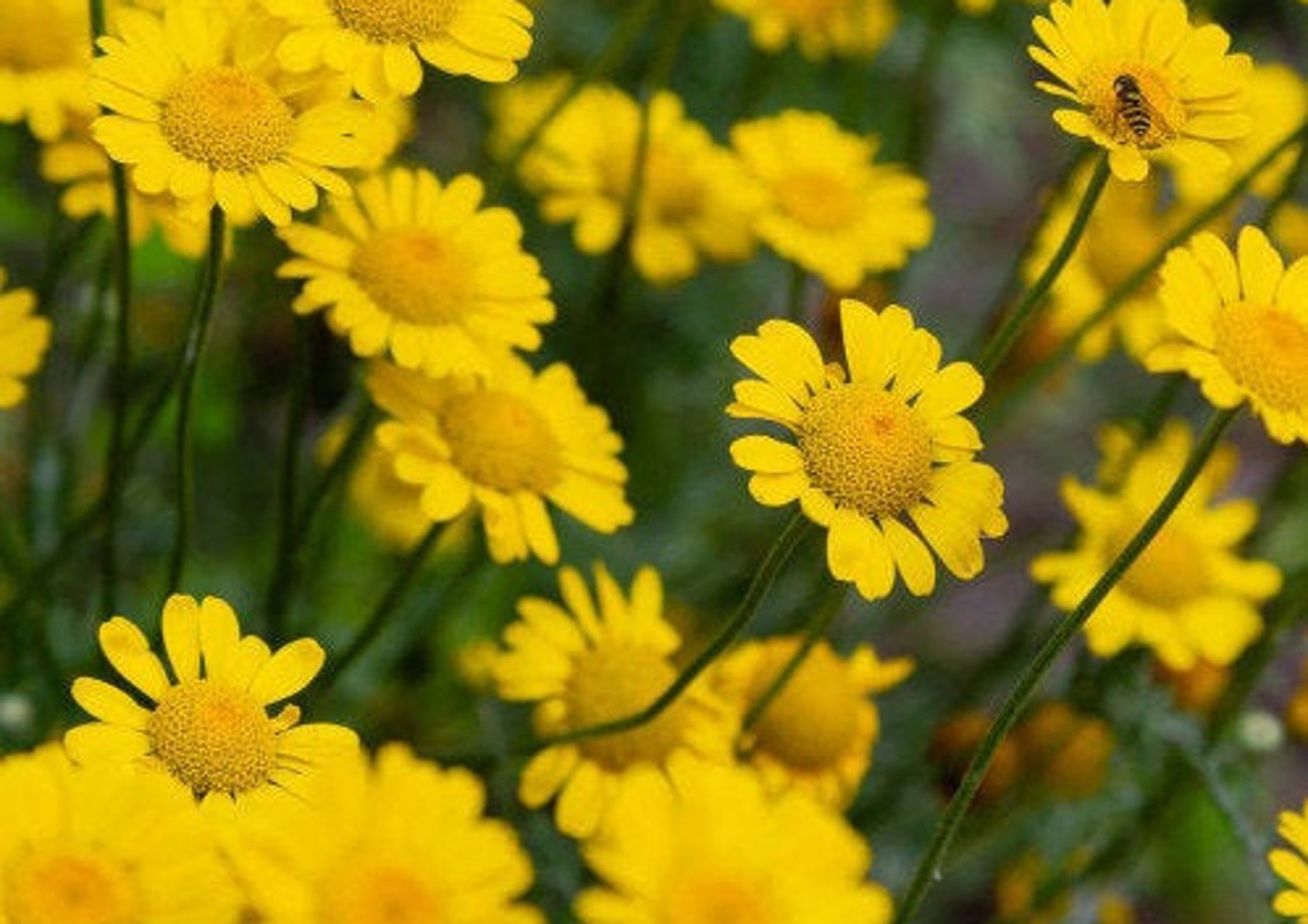

Dyer's chamomile seeds
lat.: Anthemis tinctoria
€2.85
Bring warm, natural colors to your dyeing projects with Dyer’s Chamomile (lat. Anthemis tinctoria) seeds. Easy to grow and a-must in any dyer’s garden, this resilient plant produces yellows with an alum mordant, while iron or copper mordants shift colors to various greens. Overdye with indigo or woad for fresh spring greens and deep emeralds, or mix with red natural dyes to create orange hues. Naturally growing in Europe, North America, and parts of Asia, Dyer's Chamomile has been used for centuries and remains a must-have for any natural dyers looking to create a diverse range of colors and explore the full life cycle of a plant.
Name: Dyer's chamomile
Latin name: Anthemis tinctoria
Other names: Yellow chamomile, Golden Marguerite, Cota tinctoria
Type: mordant dye
Part of the plant used: flowers for most brilliant yellows. Leaves and stalks can be used as well.
Main colorants: various flavonoids
Main colors: yellow
Other colors: honey, soft yellow, and various greens such as sage, moss, and mint.
Purpose: natural dye for textiles, candles, and other natural materials. It can be used for making botanical inks, pastels, watercolors, printing paste, etc.
Growing and harvesting Dyer’s Chamomile:
Starting Seeds: Begin indoors about four weeks before the last frost, then transplant the seedlings outside after the frost risk has passed. Space the plants 6–8 inches apart.
Planting Location: Choose a sunny location with well-drained soil. Dyer’s Chamomile is hardy and can withstand dry conditions, although it blooms more abundantly with regular watering.
Caring for Plants: This perennial is fairly low-maintenance but benefits from regular harvesting, encouraging more blooms. Both flowers and plant tops yield dye, producing bright yellow shades.
Harvesting and Dyeing: Flowers can be picked once they open, and the plants will continue blooming, especially in their second year. Harvested blooms can be dried for later use and yield vibrant yellows that can be modified using mordants like iron or copper to create green shades